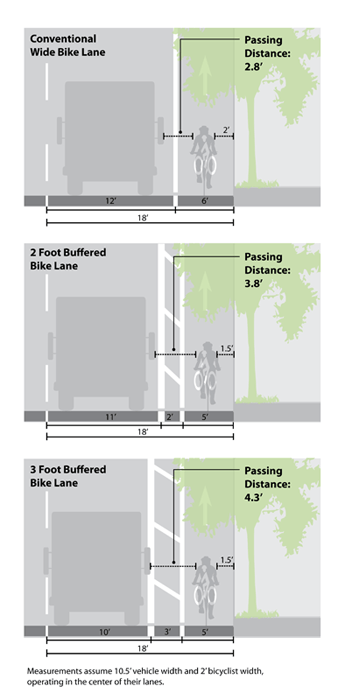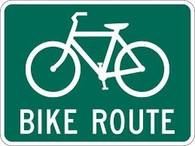Bike Lanes
Posted by Jeffrey Dornbos on 20th Nov 2018
Bike Lanes
Bike
Lanes are becoming increasing popular in large and small cities alike. Physical fitness, environmental, and
financial minded alike find that bicycle lanes are an easy alternative to
traveling by car. A
Bike Lane is defined
as a portion of the roadway that has been designated by striping, signage, and
pavement markings for the preferential or exclusive use of bicyclists. Bicycle
lanes allow bicyclists a chance to ride their chosen speed without having to
worry about cars and trucks bearing down on them from behind. Bike Lanes have no physical barrier that
keeps motorized traffic from encroaching onto the bicy
clist’s lane.
Bike lane configurations depends on existing
traffic conditions such as traffic volume, landscape and easement of existing properties
along the bike route.&
Conventional Bike Lanes
Conventional bike lanes provide for a designated space for bicyclists to navigate through with the aid of pavement markings, flexible delineator post, and traffic control signage and in some cases curb or parking lanes. Bike lane traffic travels with vehicle travel and flows in the same direction.
Benefits of Conventional Bike Lanes
- Creates separations between bicyclists and
vehicles.
- Gives bicyclists confidence when navigating busy traffic.
- Increases the predictability of bicyclists from vehicles
maneuvering for position.
Signs, pavement markings and bike lane delineatorsremind motorists of bicyclist’s right to the street.
Left-Side Bike Lanes
Left-side bike lanes are placed on the left side of a one-way street or a two-way median divided street. Left-side bike lanes are often used along streets with heavy truck or vehicle delivery, public transit or areas with high parking turnover of other potential hazards of a right-side bike lane.
Benefits of Left-Side Bike Lanes
- Avoids potential right-side bike
lane conflicts on streets
- Improves bicyclist visibility by
motorists by having the bike lane on the driver’s side.
- Provides consistent facility
configuration in locations where right-side travel lanes are subject to
rush hour parking restrictions and other flexible uses.
- Minimizes door zone conflicts next to
parking because of fewer door openings on the passenger side of vehicles.
- Fewer bus and truck conflicts as most bus
stops and loading zones are on the right side of the street.
Buffered Bike Lanes
Buffered bike lanes are conventional bicycle lanes paired with a designated buffer space separating the bicycle lane from the adjacent motor vehicle travel lane and/or parking lane. A buffered bike lane is allowed as per MUTCD guidelines for buffer preferential lanes (section 3D-01).

Benefits of Buffered Bike Lanes
- Provides greater shy distance between motor vehicles and
bicyclists.
- Provides
space for bicyclists to pass another bicyclist without encroaching into
the adjacent motor vehicle travel lane.
- Encourages
bicyclists to ride outside of the door zone when buffer is between parked
cars and bike lane.
- Allows for
greater space for bicycling without making the bike lane appear so wide
that it might be mistaken for a travel lane or a parking lane.
- Appeals to a
wider cross-section of bicyclists.
- Encourages
bicycling by contributing to the perception of safety among users of the
bicycle community.
Dornbos Sign & Safety Inc. has your bike lane signs, sign posts, and flexible delineator post to make your bike lanes safe. Dornbos Sign & Safety Inc. manufactures MUTCD and FHWA specific traffic control signs and bike lane signs. We also carry sign post and flexible delineator posts from industry leaders.
For more information call 800.922.0029, email us at info@dornbossign.com or visit us today at DornbosSign.com




